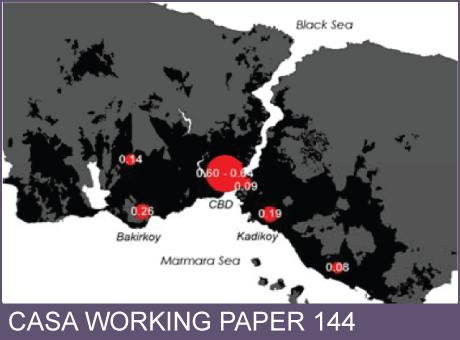CASA Working Paper 144

1 August 2008
Analyzing Urban Sprawl Patterns Through Fractal Geometry: The Case of Istanbul Metropolitan Area
Over the last decade, there has been a rapid increase in the amount of literature on the measurement of urban sprawl. Density gradients, sprawl indexes which are based on a series of measurable indicators and certain simulation techniques are some quantitative approaches used in previous studies. Recently, fractal analysis has been used in analyzing urban areas and a fractal theory of cities has been proposed. This study attempts to measure urban sprawl using a sprawl index and analyses urban form through fractal analysis for characterizing urban sprawl in Istanbul which has not been measured or characterized yet.
In this study, measures of sprawl were calculated at each neighborhood level and then integrated within sprawl index through 'density' and 'proximity' factors. This identifies the pattern of urban sprawl during six periods from 1975 to 2005, and then the urban form of Istanbul is quantified through fractal analysis in given periods in the context of sprawl dynamics. Our findings suggest that the fractal dimension of urban form is positively correlated with the urban sprawl index score when urban growth pattern is more likely 'concentrated'. However, a negative relationship has been observed between fractal dimension and sprawl index score when the urban growth pattern changes from the concentrated to the semi-linear form.
This working paper is available as a PDF. The file size is 840.32KB.
Authors: H Serdar Kaya, Fatih Terzi
Publication Date: 1/8/2008
 Close
Close

